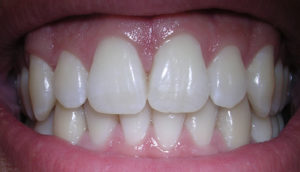 Flame retardants. All around us, and in us. So, so hard to avoid because they're in electronic goods, in upholstered furniture, polyurethane foam, carpet pads, some textiles, the foam in baby items, house dust, building insulation, and on and on. And unfortunately, while a number of toxic flame retardants have been phased out, it appears that the new replacements may be just as bad and are more easily inhaled (the small particles go down the air tract and into the lung tissue).
Flame retardants. All around us, and in us. So, so hard to avoid because they're in electronic goods, in upholstered furniture, polyurethane foam, carpet pads, some textiles, the foam in baby items, house dust, building insulation, and on and on. And unfortunately, while a number of toxic flame retardants have been phased out, it appears that the new replacements may be just as bad and are more easily inhaled (the small particles go down the air tract and into the lung tissue).
What to do? Wash hands before eating. Try to use a vacuum cleaner with a HEPA filter. Try to avoid products that say they contain "flame retardants". Only buy upholstered furniture with tags that say they are flame retardant free. From Environmental Health News:
As Washington state decides on stronger toxics law, residents are breathing flame retardants
A new generation of chemicals added to furniture, building insulation and baby products like car seats to slow the spread of flames are escaping into air at higher levels than previously thought, according to a new study out of Washington state. The findings come as Washington lawmakers decide on bolstering flame retardant bans. The state was one of the first to ban an earlier generation of retardants, known as PBDEs.
The new research found flame retardant chemicals used to replace polybrominated diphenyl ethers (PBDEs) also escape, are ubiquitous in indoor air and suggest inhalation is a major route of exposure for people. The compounds, called chlorinated organophosphate flame retardants, found in the study have been linked to cancer and reproductive problems, and some can alter hormones essential for development. “We’ve been underestimating what total exposure is,” said Erika Schreder, staff scientist at the Washington Toxics Coalition and lead author of the study published this month in the scientific journal Chemosphere.
Researchers gave 10 people from Washington state an air sampler that simulates breathing to wear during a normal day: office work, commuting, hanging out at home. They tested for a suite of the new generation of chlorinated flame retardants and found all 10 were breathing some amount of them throughout the day. Exposure to one of the most prevalent compounds was up to 30 times greater than ingesting the chemicals via dust. The distinction is important: dust exposure occurs largely through the mouth, previously thought to be the major exposure route for banned PBDEs.
Chlorinated flame retardants are used mostly in polyurethane foam, often in building insulation and everyday products such as furniture, children’s car seats and baby strollers. The compounds are substitutes for PBDEs, which were widely used as flame retardants until scientists reported they were building up in people and wildlife and various bans took hold.
While chlorinated flame retardants have been around for decades, Salamova said scientists have recently started to understand them as, at first, it was thought they weren’t harmful or able to accumulate in people and wildlife. However there is evidence the replacement are following the same path as PBDEs: chlorinated flame retardants have been found in household dust, children’s products, drinking water, and mother-toddlers pairs. Two chlorinated flame retardants have been flagged by the state of California as carcinogens, and animal research suggests they may hamper brain development as well.
From Medical Xpress: Prenatal exposure to flame retardants linked to poorer behavioral function in children
New research from the University of Cincinnati (UC) College of Medicine suggests that prenatal exposure to flame retardants and perfluoroalkyl substances (PFASs) commonly found in the environment may have a lasting effect on a child's cognitive and behavioral development, known as executive function...."We examined the relationship between prenatal exposure to PBDEs and PFASs and executive function in children at 5 and 8 years of age," said Ann Vuong, DrPH, a postdoctoral fellow at the University of Cincinnati in the Department of Environmental Health. "The findings suggest that maternal serum concentrations of PBDEs and perfluorooctane sulfonate (PFOS), one of the most commonly found PFASs in human blood, may be associated with poorer executive functioning in school-age children."
From Science Daily: Exposure to common flame retardants may contribute to attention problems in children
Prenatal exposure to some flame retardants that have been widely-used in consumer products is associated with attention problems in young children. A new study is the first to show the effects of prenatal exposure to polybrominated diphenyl ethers on children's development at ages 3, 4, and 7 years. Children with the highest exposure to certain PBDEs had approximately twice the number of maternally-reported attention problems compared to the other children in the study. PBDEs are found in textiles, plastics, wiring, and furniture containing polyurethane foam to reduce flammability.
Very nice and thorough report about flame retardants written in 2013 by the highly regarded center EHHI (Environment and Human Health, Inc.): FLAME RETARDANTS THE CASE FOR POLICY CHANGE


_lores.jpg) Borrelia burgdorferi Credit: CDC
Borrelia burgdorferi Credit: CDC A new study has confirmed an association between proton pump inhibitors (PPIs) — drugs that treat heartburn, peptic ulcers, and other acid-related disorders of the upper gastrointestinal tract — and increased risk for dementia in older patients. An earlier study by the same researchers found the same link between PPI use and dementia risk. The drugs work by lowering the amount of acid produced by the stomach. PPIs are among the most frequently prescribed drugs, and include omeprazole (Losec), esomeprazole (Nexium), lansoprazole (Prevacid), and the over-the-counter medication Olex.
A new study has confirmed an association between proton pump inhibitors (PPIs) — drugs that treat heartburn, peptic ulcers, and other acid-related disorders of the upper gastrointestinal tract — and increased risk for dementia in older patients. An earlier study by the same researchers found the same link between PPI use and dementia risk. The drugs work by lowering the amount of acid produced by the stomach. PPIs are among the most frequently prescribed drugs, and include omeprazole (Losec), esomeprazole (Nexium), lansoprazole (Prevacid), and the over-the-counter medication Olex. Very exciting research IF it pans out - the idea of treating (some) cancers with probiotics (beneficial bacteria). This study was done on mice, and some mice started the probiotic mixture one week before they gave the mice the liver cancer, so...more limitations there. But the idea is so tantalizing and wonderful... And what was in the mixture of bacteria (called probiotic Prohep) that the mice ate that had beneficial results of shrinking liver tumors? The probiotic Prohep is composed of Lactobacillus rhamnosus GG (LGG), Escherichia coli Nissle 1917 (EcN), and heat inactivated VSL#3 (1:1:1). VSL#3 contains: Streptococcus thermophilus, Bifidobacterium breve, Bifidobacterium longum, Bifidobacterium infantis, Lactobacillus acidophilus, Lactobacillus plantarum, Lactobacillus paracasei, and Lactobacillus delbrueckii. Note that Lactobacillus rhamnosus and some of the others are already found in many probiotic mixtures. From Medical Xpress:
Very exciting research IF it pans out - the idea of treating (some) cancers with probiotics (beneficial bacteria). This study was done on mice, and some mice started the probiotic mixture one week before they gave the mice the liver cancer, so...more limitations there. But the idea is so tantalizing and wonderful... And what was in the mixture of bacteria (called probiotic Prohep) that the mice ate that had beneficial results of shrinking liver tumors? The probiotic Prohep is composed of Lactobacillus rhamnosus GG (LGG), Escherichia coli Nissle 1917 (EcN), and heat inactivated VSL#3 (1:1:1). VSL#3 contains: Streptococcus thermophilus, Bifidobacterium breve, Bifidobacterium longum, Bifidobacterium infantis, Lactobacillus acidophilus, Lactobacillus plantarum, Lactobacillus paracasei, and Lactobacillus delbrueckii. Note that Lactobacillus rhamnosus and some of the others are already found in many probiotic mixtures. From Medical Xpress: Another microbe that causes Lyme disease! Lyme disease is the most common tick-borne disease in the northern hemisphere, and it is caused by the bacteria Borrelia burgdorferi. Recently Mayo Clinic researchers found a new bacteria, which they named Borrelia mayonii, in the fluids and tissues of some people diagnosed with Lyme disease in the upper midwestern USA. The symptoms are different from typical Lyme disease: with nausea and vomiting, diffuse rashes (rather than a single bull's-eye rash), and a higher concentration of bacteria in the blood. Same treatment as with the original bacteria , but it may not show up in tests for Lyme disease.
Another microbe that causes Lyme disease! Lyme disease is the most common tick-borne disease in the northern hemisphere, and it is caused by the bacteria Borrelia burgdorferi. Recently Mayo Clinic researchers found a new bacteria, which they named Borrelia mayonii, in the fluids and tissues of some people diagnosed with Lyme disease in the upper midwestern USA. The symptoms are different from typical Lyme disease: with nausea and vomiting, diffuse rashes (rather than a single bull's-eye rash), and a higher concentration of bacteria in the blood. Same treatment as with the original bacteria , but it may not show up in tests for Lyme disease. Two new papers just published in the British Journal of Nutrition are analyses of existing studies that compare conventional vs organic milk, and conventional vs organic red meat. Both studies found clear differences between organic meat and milk compared to conventional milk and meat, with the organic milk and meat best health-wise, especially due to differences in
Two new papers just published in the British Journal of Nutrition are analyses of existing studies that compare conventional vs organic milk, and conventional vs organic red meat. Both studies found clear differences between organic meat and milk compared to conventional milk and meat, with the organic milk and meat best health-wise, especially due to differences in  Some studies with humans suggest that cancer growth is slowed with exercise, better cancer prognosis with regular exercise, and lowered cancer recurrence (e.g., exercise after prostate cancer diagnosis), but a recent study looked at the issue more in depth.
Some studies with humans suggest that cancer growth is slowed with exercise, better cancer prognosis with regular exercise, and lowered cancer recurrence (e.g., exercise after prostate cancer diagnosis), but a recent study looked at the issue more in depth. The finding that the oral bacteria Streptococcus mutans, which is found in 10% of the population, is linked with hemorrhagic strokes is big. S. mutans is found in tooth decay or cavities (dental caries). The researchers found a link with cnm-positive S. mutans with both intracerebral hemorrhage (ICH) and also with cerebral microbleeds.
The finding that the oral bacteria Streptococcus mutans, which is found in 10% of the population, is linked with hemorrhagic strokes is big. S. mutans is found in tooth decay or cavities (dental caries). The researchers found a link with cnm-positive S. mutans with both intracerebral hemorrhage (ICH) and also with cerebral microbleeds. Remember all the medical advice for years about not eating eggs frequently (high cholesterol! heart disease!) and to instead eat egg white omelettes if one absolutely wanted to eat eggs? Remember the obsession with dietary cholesterol? Well, this recent research followed 1032 men for 21 years and found that a relatively high intake of dietary cholesterol, or eating one egg every day, was not associated with an elevated risk of incident coronary heart disease - not in the entire study population nor in those with the APOE4 phenotype. Also, the study did not establish a link between dietary cholesterol or eating eggs with thickening of the common carotid artery walls. Time to enjoy eggs again! From Science Daily:
Remember all the medical advice for years about not eating eggs frequently (high cholesterol! heart disease!) and to instead eat egg white omelettes if one absolutely wanted to eat eggs? Remember the obsession with dietary cholesterol? Well, this recent research followed 1032 men for 21 years and found that a relatively high intake of dietary cholesterol, or eating one egg every day, was not associated with an elevated risk of incident coronary heart disease - not in the entire study population nor in those with the APOE4 phenotype. Also, the study did not establish a link between dietary cholesterol or eating eggs with thickening of the common carotid artery walls. Time to enjoy eggs again! From Science Daily: